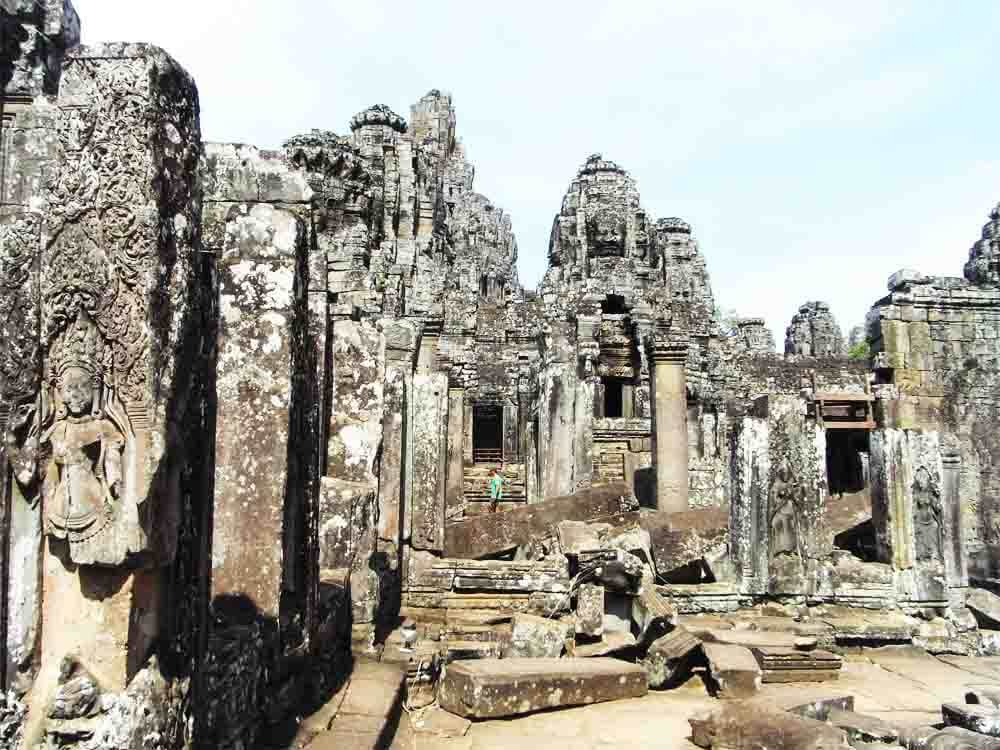建築の肝魂
Boldness of Architecture
数年前、アンコール遺跡を訪れた。世界中から年間350万人が訪れる荒廃した遺跡。現在のカンボジア王国のもととなったクメール王朝から始まり、二度も破壊されながらも保存・修復により存続している。僕はアンコール遺跡を観た時に、それを建築として捉えるべきかどうかわからなかった。それは半分壊れていて、建築の「機能」を失っているように思われたからだ。パソコンであれば壊れてしまえば捨ててしまう。しかし建築は少し壊れても使い続けることができる。壁にヒビが入ってしまっても、建物の構造が崩壊しない限り修復しながら使うことができる。最新のものである必要もない。1000年前のものであろうとも、世界中から人を集める「力」がある。そして人の想いを残し、歴史を残すことができる。建築で人が出会い、同じ時間を過ごす。建築は過去と未来を結びながら、人の営みを繋ぎ、更新し、循環させていく。僕はそこに建築の本質があると思っている。
When I visited the Angkor ruins, I was at a loss at whether it could be considered architecture. This is because half of it has collapsed and seems to have lost the conventional “function” of architecture. If a computer is broken, we throw it away. However, we can continue to use architecture even after it becomes ruined. When a wall cracks, we can restore it, unless the entire structure collapses. Architecture does not necessarily need to be the latest. Although the Angkor ruin was built about 1,000 years ago, it has the “power” to gather people from all over the world. Its remnants contain the hearts and history of various people. People meet and spend time in architecture. Architecture connects the past to the future. It connects, updates, and circulates the presence of the various people that visit it. I believe that is the essence of architecture.

